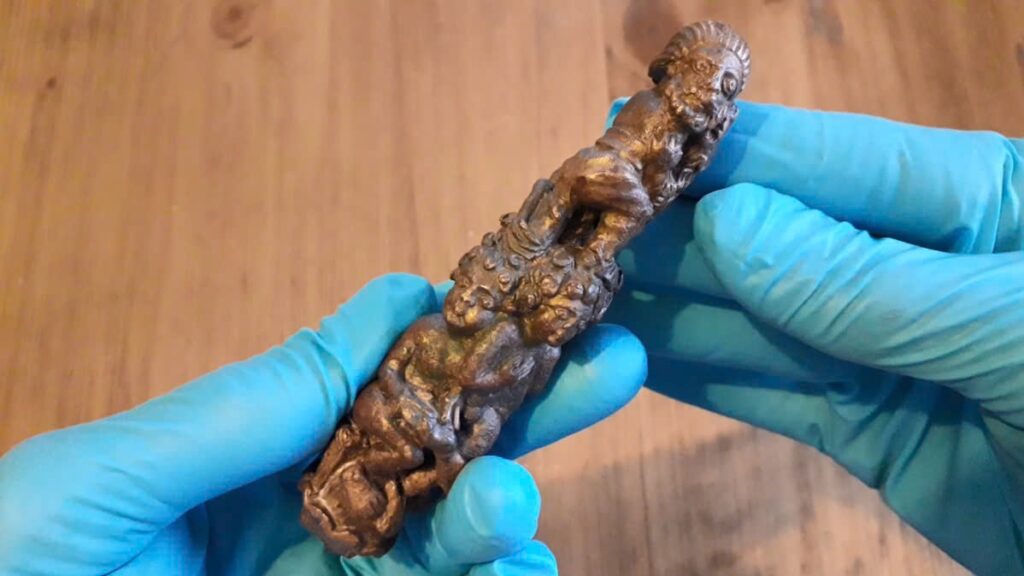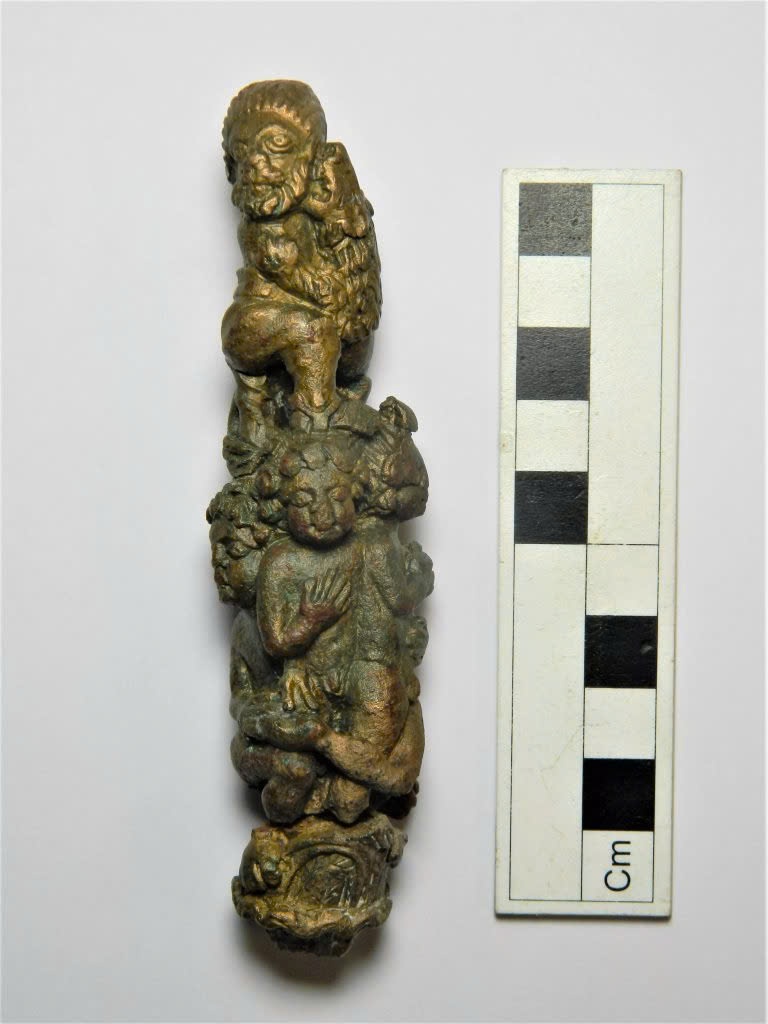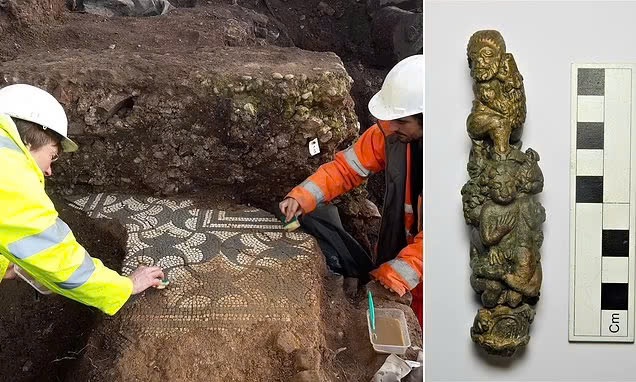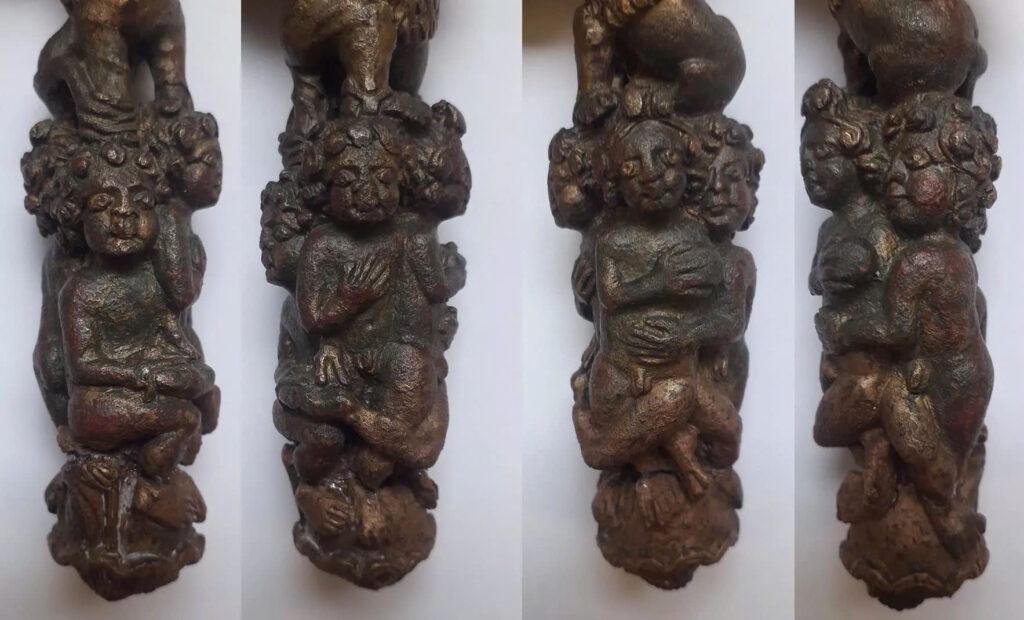Archaeologists Make Groundbreaking Discovery in Leicester

In a remarkable archaeological find, researchers have unearthed compelling evidence of the Romans’ use of lions for public executions in ancient Britain. This discovery, made in Leicester, sheds new light on the brutal spectacles that once took place in Roman amphitheaters.
A Key to the Past: The Ornate Bronze Handle
The centerpiece of this discovery is an intricately carved Roman bronze key handle, found buried beneath the floor of a late Roman townhouse. This unique artifact, excavated in 2016 by the University of Leicester Archaeological Services (ULAS), depicts a harrowing scene: a ‘Barbarian’ locked in combat with a lion, surrounded by four terrified nude children.

Dr. Gavin Speed, who led the excavations, recounts the moment of discovery: “When first found, it appeared as an indistinguishable bronze object, but after we carefully cleaned off the soil, remarkably we revealed several small faces looking back at us. It was absolutely astounding. Nothing quite like this has been discovered anywhere in the Roman Empire before.”
Decoding the Brutal Imagery
The key handle’s intricate design offers a chilling glimpse into the Roman practice of damnatio ad bestias – the execution of criminals and prisoners of war by throwing them to wild beasts. The main figure, identified as a ‘Barbarian’ by his distinctive features, is shown being mauled by a lion. The presence of the frightened children is thought to represent the fate awaiting those who resisted Roman rule.

Dr. John Pearce of King’s College London emphasizes the significance of this find: “This unique object gives us our most detailed representation of this form of execution found in Roman Britain. As the first discovery of this kind, it illuminates the brutal character of Roman authority in this province.”
From Spectacle to Symbol: The Key’s Journey Through Time

Interestingly, the key handle was found near Leicester’s newly discovered Roman theatre, suggesting a possible link between the depicted scenes and actual events. While direct evidence of such violent spectacles in Roman Britain is rare, this artifact provides a tangible connection to that brutal past.
The key, likely crafted a century or more after Britain’s conquest, evolved from a functional object to a symbol of protection. Its careful placement in a new floor long after its original use suggests an enduring belief in its protective powers.
Preserving History: The Future of the Artifact

Nick Cooper, ULAS post-excavation manager, highlights the importance of this discovery: “The key handle is one of the most significant findings from Roman Leicester.” Plans are underway to display this remarkable piece at the Jewry Wall Museum in Leicester, allowing the public to connect with this dark yet fascinating aspect of Roman Britain’s history.
As we uncover more about our past, discoveries like this remind us of the complex and often brutal nature of ancient civilizations, offering valuable insights into the foundations of our modern world.

